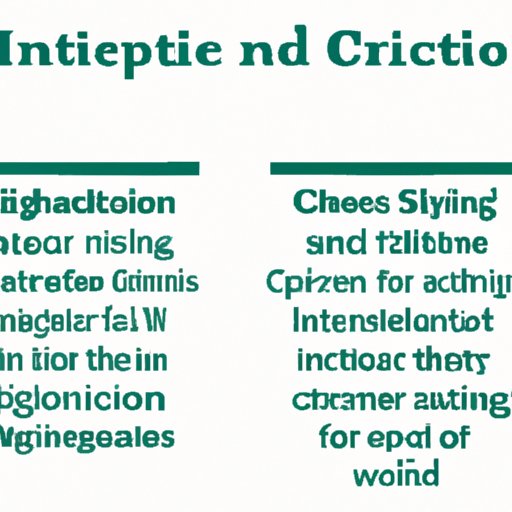
Introduction
When writing an academic paper, it’s crucial to give credit to the sources you’ve used. Failure to do so can result in plagiarism, a serious offense in the academic world. In-text citations are an essential part of academic writing, indicating the sources that you’ve used within the main body of your text. The purpose of this article is to guide you through the process of citing in-text, including different citation styles and methods for making citation easier and more efficient.
Why is it important to cite in-text?
One of the main reasons to cite in-text is to give credit to others’ ideas and work that you’ve used in your own paper. Not doing so can result in plagiarism, which can have serious consequences such as failing the assignment, the course, or compromising your academic career. Additionally, citation serves to show the academic foundation for your own paper, supporting your arguments and research by showcasing your engagement with other relevant literature published in the field.
Common citation styles
The most common citation styles used in academic writing are the Modern Language Association (MLA), the American Psychological Association (APA), and the Chicago Manual of Style. They all have different guidelines for formatting citations, such as how to cite authors’ names, titles of works, publication dates and page numbers. Generally, the citation style will depend on the type of paper you’re writing, your field of study, and the preferences of your professor. It’s important to understand the different citation styles so you can choose the right one for your paper and use it correctly.
How to cite in-text
To cite in-text, you’ll need to follow a few simple steps:
Step 1: Determine what type of source you’re using
Not all sources are cited in the same way, so you’ll need to determine what type of source you’re working with. Some common types of sources include books, journal articles, websites, and personal communications.
Step 2: Identify the author, publication date, and relevant page number
Once you’ve identified the type of source, you’ll need to locate the necessary information for citation. For example, a book citation typically requires the author’s name, the book’s title, publication date, publisher, and relevant page numbers from the book. An article from a scholarly journal typically requires the author’s name, the article title, journal name, volume number, publication date, and page numbers. Ensure that you double-check the citation guidelines of the formatting style you are using to ensure your citation is correct.
Step 3: Insert the in-text citation in the appropriate place in your paper
The in-text citation should be presented in parentheses after the sentence or quotation you have used. The format varies from citation style to citation style, but usually includes the author’s last name, the publication date, and relevant page number. For example, a typical APA in-text citation would be: (Smith, 2015, p. 24).
Examples of in-text citations
Here are some examples of in-text citations for different types of sources:
Book:
According to Brown (2012), “Happiness depends more on the internal state of the mind than on external conditions” (p. 56).
Journal article:
Smith (2019) found that “the positive effects of exercise on mental health were significant” (p. 23).
Website:
The Centers for Disease Control and Prevention states that “heart disease is the leading cause of death in the United States” (“Heart Disease”, 2018).
Personal communication:
According to Dr. Green (personal communication, November 20, 2021), “the research is conclusive that the Earth is warming at an alarming rate.”
Pitfalls to avoid
Students often make some common mistakes when citing in-text. Here are some to avoid:
- Misunderstanding citation style guidelines
- Incorrectly citing authors and publication dates
- Not providing page numbers
- Citing sources that you haven’t actually used in your paper
- Failing to include in-text citations altogether
Tips and tricks for easier citation
Here are some ways to make citation less time-consuming and more efficient:
- Use citation apps such as Zotero or EndNote
- Use reference managers like Mendeley or RefWorks
- Use browser extensions like the EasyBib Toolbar
- Familiarize yourself with the citation style guidelines, and build templates for your most commonly used types of sources, for example, books or journal articles
Conclusion
Citing sources in-text is an essential part of academic writing, and students should take it seriously to avoid plagiarism. By understanding the different citation styles, following simple steps, learning from examples, avoiding common mistakes, and using the right tools, you can make the citation process more straightforward and make it an effective tool and ally in your literature review process. Remember, by citing sources correctly, you are contributing to the conversation in your field and thoughtfully engaging with other scholars’ ideas.





